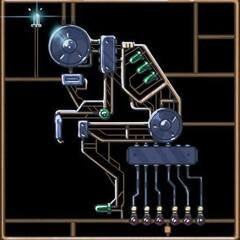First self build, any advice is appreciated
1. Not really important full tower or mid tower. Could have a cheaper mid tower and put the different in some quality fans to create airflow within the case
2. Connectors are not burning due to outside ambient temperature ... they fail like that when user doesn't connect them properly...the connectors have poor audio /visual feedback, they're not "clicking" like the other connectors do and often users don't push the connectors all the way. Or, the weight of the 3-4 cables from the connector pulls on the connector and pulls it out if the retention clip didn't click completely. If you insert it properly and don't bend it right at the connector (leave let's say 3-5 cm and then gently curve the cable ) then you should be fine.
3. I wouldn't spend extra money on Intel with DDR5 .. the performance jump is not worth the extra money and the extra power consumption.
4. For 5800x3d no, it's not needed. That cooler would be fine. IF you do get some AIO, go with something with 3 120 / 140 mm fans, not cheap 240mm. AMD 7xxx processors and higher end Intel will need AIO to keep cool - those AMD processors go up to something like 230-250 watts if they're kept cool, Intel processors can go over 300 watts. The 5800x3d peaks somewhere around 150 watts, if my memory is correct.
5. Can't comment ... Zotac is generally fine, not aware of negative reviews or controversy about it. Inno3d is less popular here in Europe, not distributed well, so can't comment about it.
re build ... the 2 TB seagate doesn't belong there. Go with at least 4 TB NAS grade drive and preferrably one that's CMR - Seagate IronWolf, WD Red Plus (red without plus is SMR etc..
Rather than 1 TB nvme + 2 TB seagate, you may be better off going with a 2 TB nvme drive, and you can go with pci-e 3.0 nvme drive , you wouldn't notice difference between 3.5 GB/s read speeds and 5-7 GB/s read speeds.
For example Samsung 970 Evo Plus is $158 ,,, would be fine replacement for the pair : https://www.amazon.com/Samsung-970-EVO-Plus-MZ-V7S2T0B/dp/B07MFZXR1B/
WD Black 2 TB is pci-e 4.0 (around 5.5 GB/s read speeds) and it's $150 now, black friday deal: https://www.amazon.com/WD_BLACK-SN770-Internal-Gaming-Solid/dp/B09QV5KJHV/
WD Blue 2 TB is pci-e 3.0 (up to around 3.5 GB/s read speeds) and it's 135$ : https://www.amazon.com/Western-Digital-SN570-Internal-Solid/dp/B09JM8DJNS/













Create an account or sign in to comment
You need to be a member in order to leave a comment
Create an account
Sign up for a new account in our community. It's easy!
Register a new accountSign in
Already have an account? Sign in here.
Sign In Now